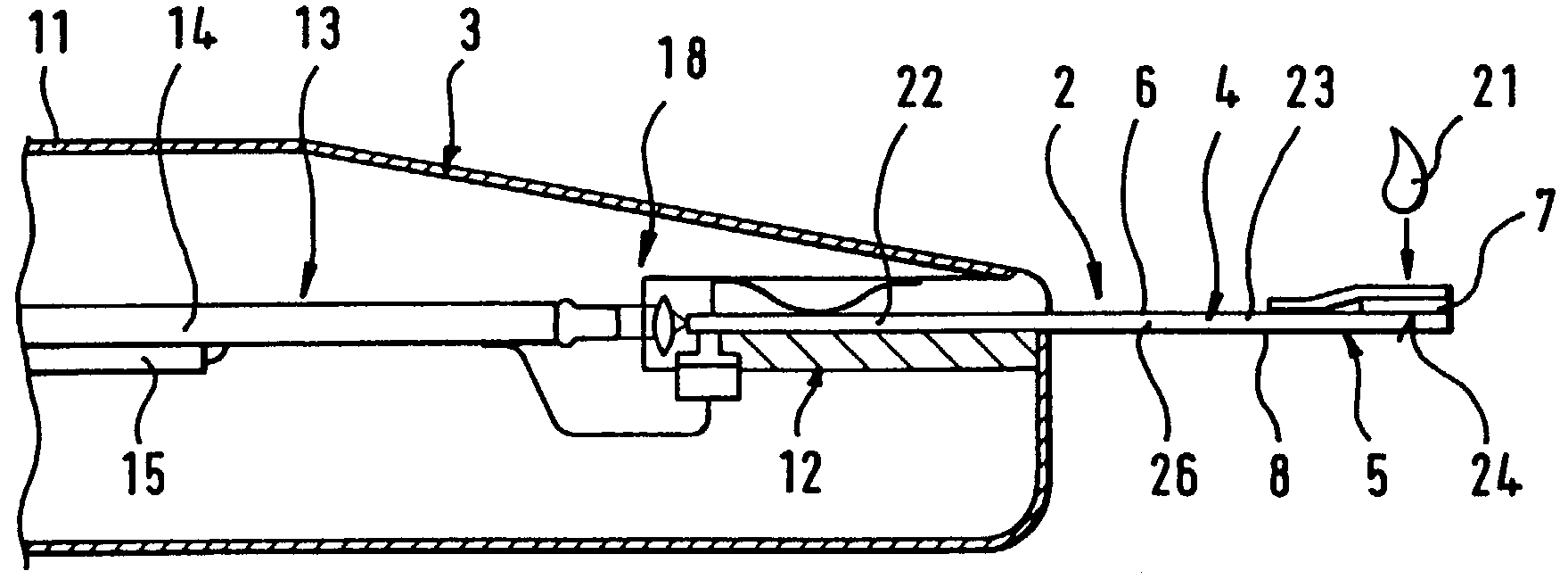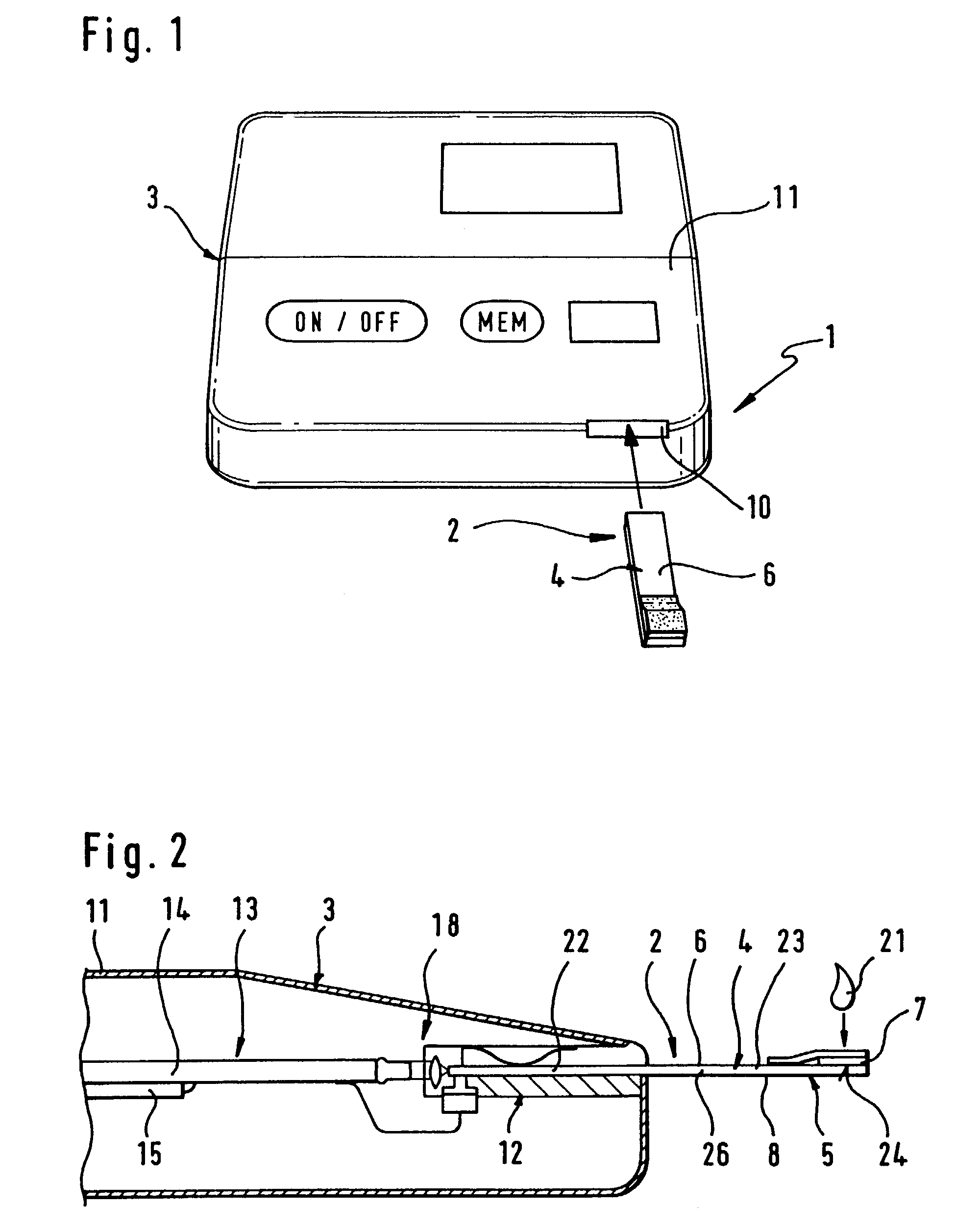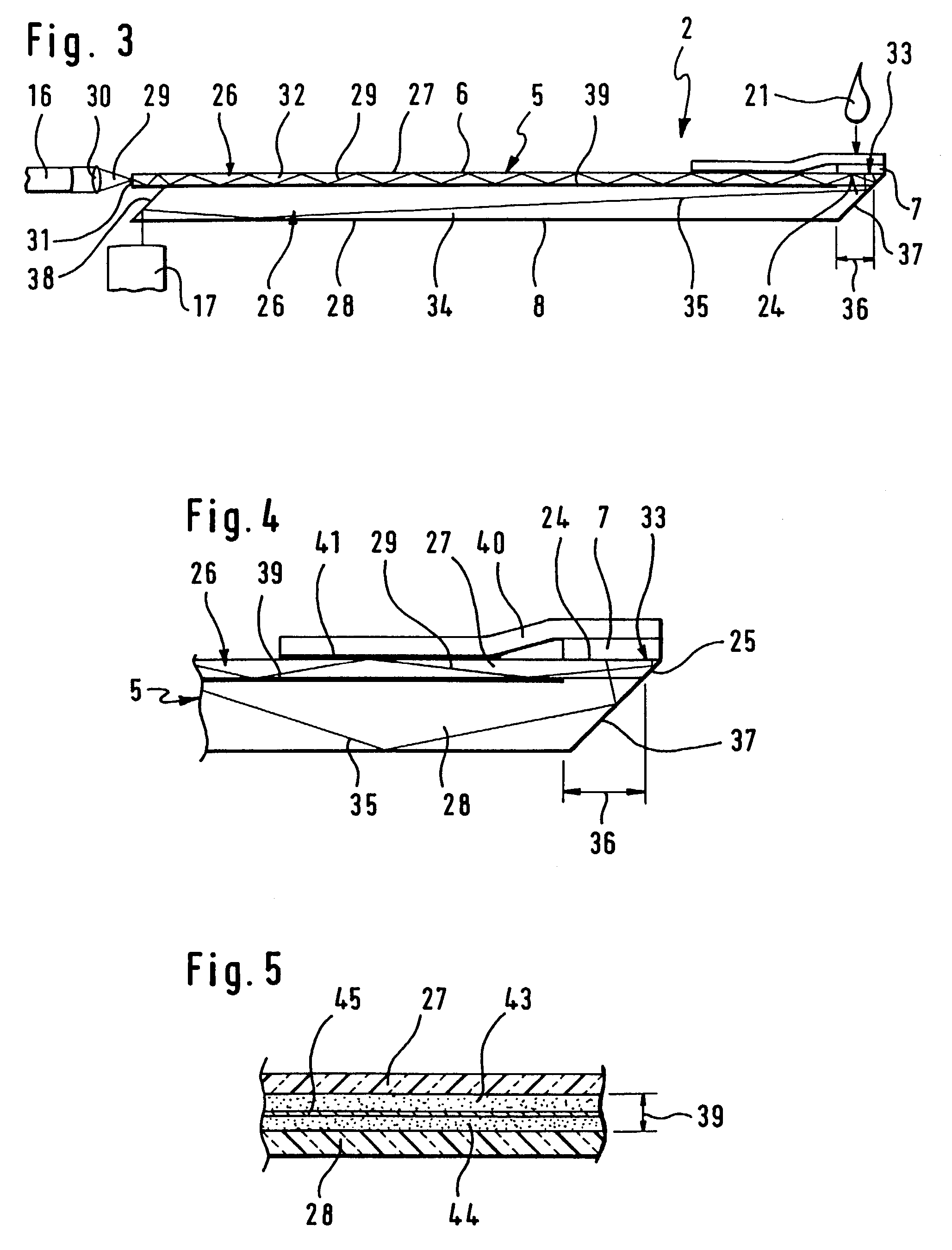Test element analysis system
a technology of element analysis and test element, applied in the field of test element analysis system, can solve the problems of high risk of contamination of measuring device, inability to always be possible, and inability to optimally handle the measurement, and achieve the effect of easy handling and high measurement accuracy
- Summary
- Abstract
- Description
- Claims
- Application Information
AI Technical Summary
Benefits of technology
Problems solved by technology
Method used
Image
Examples
Embodiment Construction
[0031]The carrier film of the invention comprises preferably, as shown in the FIGS. 3 and 4, two light guide layers 26, the upper light guide layer serving as primary light guide and the lower light guide layer serving as secondary light guide. The primary light 29 is coupled by the light emitter 16 and a lens 30 into the primary light guide 27 through its rear face serving as entrance surface 31 for the coupling in, and is transported inside the primary light guide 27 to the test field 7. The part of the light path of the primary light 29 which is inside the light guide layer 26, is designated light guide section 32. The zone of the upper flat side 6 of the light guide layer 26, which is in line with the test field, serves, at least partially, as coupling out zone 33, where the primary light 29 is coupled out of the light guide layer 27 into the detection zone 24 of the test field 7.
[0032]In the embodiment shown, the coupling out of the primary light is essentially effected by the ...
PUM
| Property | Measurement | Unit |
|---|---|---|
| thickness | aaaaa | aaaaa |
| thickness | aaaaa | aaaaa |
| width | aaaaa | aaaaa |
Abstract
Description
Claims
Application Information
 Login to View More
Login to View More - R&D
- Intellectual Property
- Life Sciences
- Materials
- Tech Scout
- Unparalleled Data Quality
- Higher Quality Content
- 60% Fewer Hallucinations
Browse by: Latest US Patents, China's latest patents, Technical Efficacy Thesaurus, Application Domain, Technology Topic, Popular Technical Reports.
© 2025 PatSnap. All rights reserved.Legal|Privacy policy|Modern Slavery Act Transparency Statement|Sitemap|About US| Contact US: help@patsnap.com



